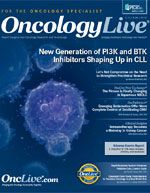Publication
Article
Oncology Live®
Genomics Studies Opening Up Fresh Options for CRC Research
Author(s):
Raju Kucherlapati, PhD, serves as principal investigator of a Genome Characterization Center as part of The Cancer Genome Atlas program, a National Cancer Institute initiative aimed at defining the copy number changes and structural aberrations present in many different cancer types.
Raju Kucherlapati, PhD
Although molecularly targeted therapies for patients with colorectal cancer (CRC) are currently limited, ongoing research is uncovering new gene abnormalities with the potential to accelerate anticancer drug development in the tumor type.
Raju Kucherlapati, PhD, conducts research into the molecular characteristics of cancer including developing mouse models of CRC and other malignancies in his laboratory at Harvard Medical School and Brigham and Women’s Hospital.
OncLive: What are the central genetic events underlying the development of CRC?
Kucherlapati, who also is a professor at Harvard Medical School, serves as principal investigator of a Genome Characterization Center as part of The Cancer Genome Atlas (TCGA) program, a National Cancer Institute initiative aimed at defining the copy number changes and structural aberrations present in many different cancer types. Kucherlapati: There are two forms of CRC. The first form is rarer and results from a genetic predisposition. In one class of hereditary CRC, individuals who are born with a mutation in the APC gene develop familial adenomatous polyposis (FAP), which is characterized by a large number of polyps in the colon that can develop into carcinomas unless resected.
Another class is the result of a germline mutation in genes involved in DNA mismatch repair including MLH1 and MSH2; these individuals have Lynch syndrome (also known as hereditary nonpolyposis colorectal cancer) and they develop CRC usually before they reach age 50.
The most common form is sporadic CRC and, as the name indicates, this type of cancer can affect anybody.
What have genome-wide studies, like the one carried out by TCGA, taught us about the genomics of CRC?
How has this knowledge affected the development of novel targeted therapies and what impact might it have in the future?
Virtually all cases of CRC result from initial dysregulation of the Wnt signaling pathway, usually as a result of mutations in the APC gene. As the tumors progress, many other growth regulatory pathways including the RAS/MAPK pathway and PI3-kinase pathways are also affected. Alterations in the MYC gene pathway are also quite common. The TCGA project was the first of its kind in that a very large number of CRC tumors have been subjected to a multipronged examination that resulted in a greater level of understanding of the complexity and diversity of CRC. There are a number of implications. First, since a proportion of CRC comes from Lynch syndrome patients, identifying these patients is critical because their family members have a 50% probability of carrying the same gene. It is now an NCCN guideline to test all CRC patients for the Lynch syndrome genes.
Nearly 50% of CRC tumors have alterations in the RAS pathway, primarily in the form of mutations in KRAS and NRAS genes. There are drugs that are currently in development for inhibiting this pathway, and if a patient’s tumor is found to have such an alteration they can be considered for clinical trials for the use of such drugs.
Similarly, nearly 50% (some of them overlapping) of patients have alterations in the PI3K pathway, and there are drugs that are approved for other tumor types that can inhibit this pathway. Patients found to have alterations in this pathway also can be enrolled in clinical trials. It turns out a small fraction (5%) of tumors have increased levels of expression of HER2 or ERBB2. Such an alteration is present in 25% of patients with breast cancer who are commonly treated with Herceptin [trastuzumab] or other related drugs. This group of patients is being tested for their response to Herceptin.
How is genomic data being used to generate a consensus classification of CRC and why is this an important endeavor?
About 15% of the patients have mutations in the BRAF gene, and drugs have been approved to treat patients with melanoma with the same type of BRAF mutations. Although not all cancers are the same, efforts are being made to determine if a BRAF inhibitor alone or in combination with other drugs would be effective in this subset of patients. Tumors from about 15%-20% of the patients have a defect in their DNA mismatch capacity and these tumors have a high mutation burden. It has recently been shown that such patients respond well to modern immune therapies. Clinically, colon and rectal cancers are treated differently but the TCGA study showed that at the molecular level, there are no differences.
DNA repair defects are detected by an assay that detects microsatellite instability, and the TCGA study showed that this assay misses some patients with DNA repair defects. CRC as well as many other cancer types are now being reclassified on the basis on their genetic composition rather their anatomical origin or pathological description.
What are the most significant unanswered questions or challenges relating to understanding the genomic background of CRC?
We have a significant amount of understanding of the biology of CRC. Efforts to use this genetic/ genomic information to design optimal clinical trials with targeted therapies has not been proceeding at a rapid pace. We also need to understand the time at which the types of targeted therapies mentioned above can optimally be used and what the outcomes of such interventions are.










